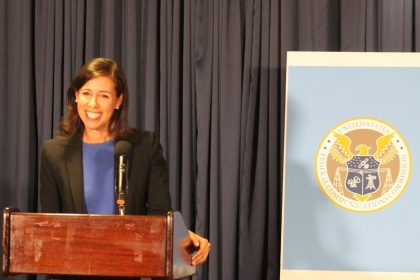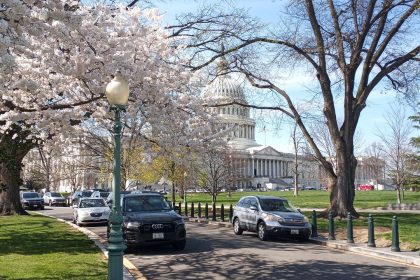Public-Private Partnerships, Accurate Maps Should Drive US Broadband Deployment

In South Carolina, the state government is matching broadband service providers dollar-for-dollar if they build out networks to the identified unserved areas, said Andrew Rein, chief financial officer of telecommunications provider Hargray, Wednesday.
And the need for accurately mapping these areas without access to high-speed broadband service versus those with it, known as broadband maps, shared the limelight with the importance of these public-private partnerships during Wednesday’s USTelecom event discussing the Biden administration’s broadband policy.
The pandemic has only further exposed the importance of being connected, with a majority of people working remotely, and creating an “entire new economy,” said Rep. Marc Veasey, D-Texas, opening the event with his “fiberside” chat.
“We want to make sure that everybody can be a part of that,” he added, explaining that “so much of the future is going to revolve around technology” and only people who have access to it will be able to “play a part in this new economy.”
“People that don’t [have access to being connected] will lag behind,” Veasy charged.
The issues plaguing the digital divide primarily fall on affordability and accessibility. Veasey, through the passage of his 2020 Emergency Broadband Connections Act, has been dubbed the congressional creator of the Emergency Broadband Benefit Program that the Federal Communications Commission has been tasked with overseeing.
Tackling the affordability aspect of the broadband challenge, the EBB Program provides eligible low-income households with discounts for their high-speed broadband service. The FCC recently announced 2.3 million households enrolled in the third week of the EBB Program’s rollout. The American Jobs Plan also includes broadband under its infrastructure funding plan, but the proposed $100 billion is still under a cross-aisle debate, with Republicans looking for a more conservative $65 billion. Veasey also introduced the Enhanced Emergency Broadband Act in March, which seeks to expand the EBB Program’s authorities, by increasing funding for it and for the states implementing it. Its sister act in the Senate seeks an additional $6 billion for the EBB Program’s fund.
Nevertheless, as many advocates of the EBB program continue to call for an extended or permanent version of it, many are also calling for its funds to be hyper-targeted. That is, to focus on unserved areas in which funding is needed the most.
This targeted funding to unserved areas addresses the accessibility challenge in broadband deployment, as some areas “are not reached by wireline networks and we need to not lose sight of them,” Rein said during the panel following Veasey’s chat.
The Leading Infrastructure For Tomorrow’s America Act, introduced in March, also seeks to address this accessibility issue. The LIFT Act, Veasey explained, “prioritizes those unserved areas” by targeting two-thirds of the $40 billion funding – which is to be distributed over a five-year period – to these areas.
But the government’s approach needs to be more creative and take advantage of the boots already on the ground, the panelists said.
Public-private partnerships “help underwrite the cost” and will be “critical in solving the availability gap to closing the digital divide,” charged Melissa Mann, vice president of public policy and government affairs for Lumen.
Rein agreed and pointed out that Hargray has already begun rolling out a “connected communities” program. By putting aside 1% of its own capital budget, “about $1 million a year,” the South Carolina-based service provider has been able to “[subsidize] the supply into these areas,” Rein explained, while simultaneously “offering great discounts.” To be a successful broadband network, a provider has to “pass homes” for about $2000 per home, he explained, but the cost jumps to $6000 to $10,000 per “home pass” in rural areas, where people often can’t afford service anyway. Combining private efforts like this with the EBB Program, which Rein pointed out “[subsidizes] the demand for people to have access to it.”
But to accurately get broadband to the areas that do not have access, you first have to know where they are. South Carolina’s mechanism allows for providers to tell the state if they have identified an area that is actually covered by them, but “that’s not the long-term solution,” Rein said.
“The lack of consistent, granular mapping data” drives the need for state government involvement, Mann said. “Where we struggle is helping states identify where those areas are,” she said, and they should be provided with them from a federal level.
Mann pointed out that her home state of Louisiana just passed a bill this week creating the Granting Unserved Municipalities Broadband Opportunities program to apply over $180 million to provide broadband to 400,000 households. Both private and public service providers can apply to GUMBO to receive the federal funding to create broadband networks that reach these unserved areas.
























